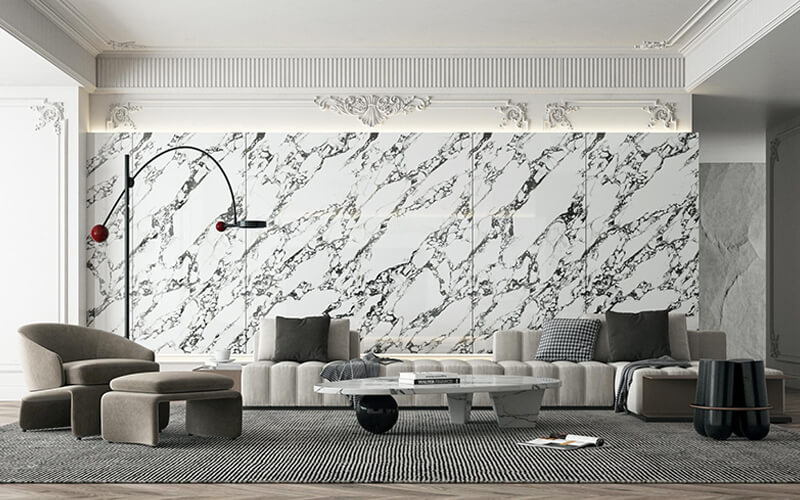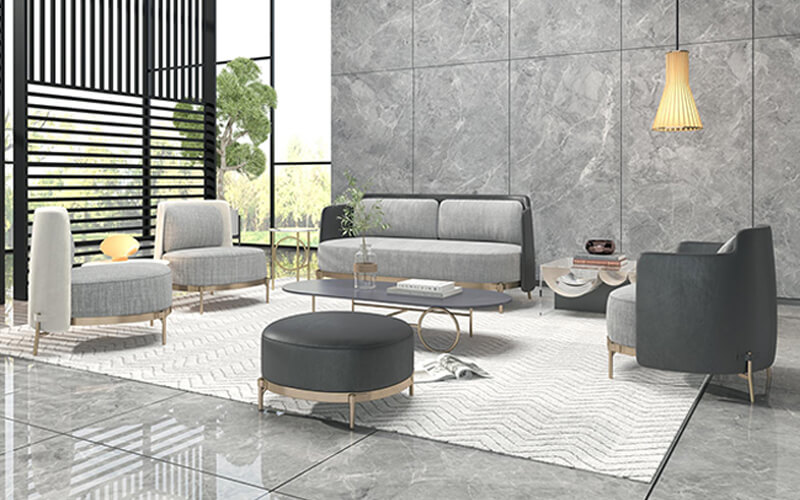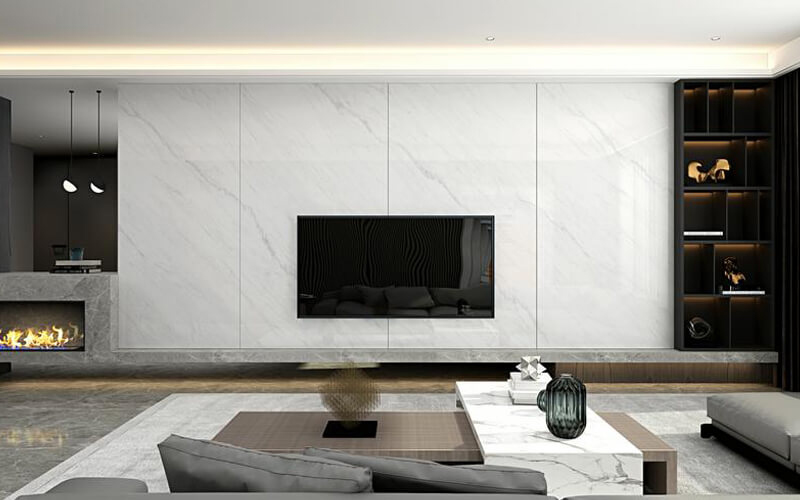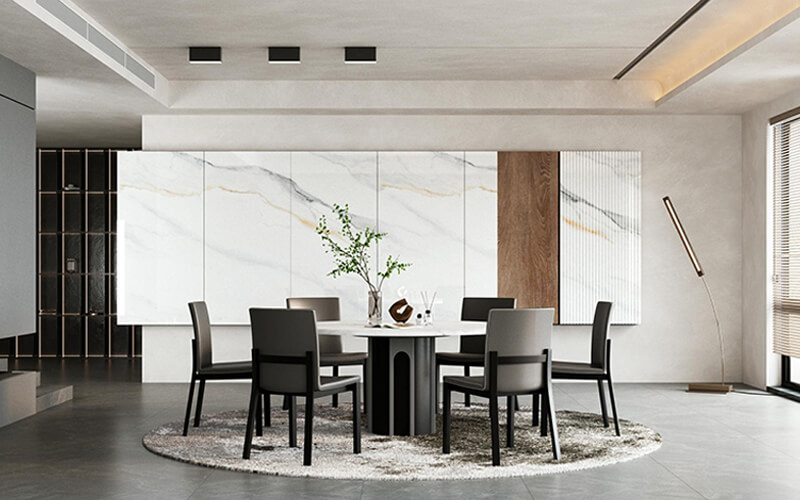Sintered stone has quickly gained popularity in the interior design and renovation fields due to its superior durability, beautiful appearance and excellent performance in a variety of environments. As owners and designers continue to explore the options of floor materials, Sintered stone has gradually become a popular option, especially for high-traffic areas. In this blog, we will explore the advantages of Sintered stone as a floor tile and how it can enhance your floor experience.
What is Sintered Stone?
It is made of natural raw materials through a special process. It is made of natural stone powder, feldspar and other raw materials through a press of more than 36,000 tons, combined with NDD technology, and fired at a high temperature of more than 1,200°C. We can understand it as a large-format tile, but sintered stone has extremely high hardness and can withstand various high-intensity processing processes such as cutting, drilling and grinding, and its physical properties are more stable than tiles.

Why choose Sintered Stone as a floor tile?
1,Unparalleled durability, Sintered stone is known for its sturdiness and durability. It is very resistant to scratches, stains and impacts, making it an ideal flooring material for high-traffic areas. Whether it is a busy kitchen, a high-traffic hallway, or an outdoor space, Sintered stone can withstand the wear and tear of daily use without losing its beauty.
2,Scratch and stain resistance. A significant advantage of Sintered stone as a flooring material is its ability to resist stains and scratches. Unlike traditional wood floors or ceramic floor tiles, Sintered stone has almost zero water absorption and is not easily scratched by sharp objects. This makes it an ideal choice for homes with children, pets, or areas prone to water spills, such as kitchens and bathrooms.
3,Aesthetic diversity Sintered stone comes in many different colors, patterns, and finishes, which can be customized to suit different interior styles, and sintered stone can be seamlessly spliced to create a simple and elegant floor that is visually modern and full of design.
4,Easy maintenance. Sintered stone stains can be easily wiped off with water, and regular cleaning does not require special treatment. This makes Sintered stone an ideal choice for those who want a low-maintenance flooring option while maintaining long-term beauty.

Factors to Consider When Choosing Sintered Stone as a Floor Tile
While Sintered stone has many advantages, there are some factors to consider when choosing it as a floor tile:
1、Installation Complexity: Due to its density and weight, Sintered stone can be more challenging to install than other flooring materials. Therefore, it is crucial to hire an experienced professional to carry out the installation to ensure that the tile can be laid correctly and securely.
2,Cost: Sintered stone can be more expensive than traditional ceramic or porcelain floor tiles. However, the investment is usually worth it considering its long-term durability, performance and beauty. If you are looking for a long-term flooring solution, Sintered stone's performance in durability and appearance can provide excellent value for money.

Conclusion
If you want a floor tile that combines performance, luxury and sustainability, Sintered stone is definitely worth considering. When installed properly and with the proper care, it can provide many years of beauty and functionality to any space.


